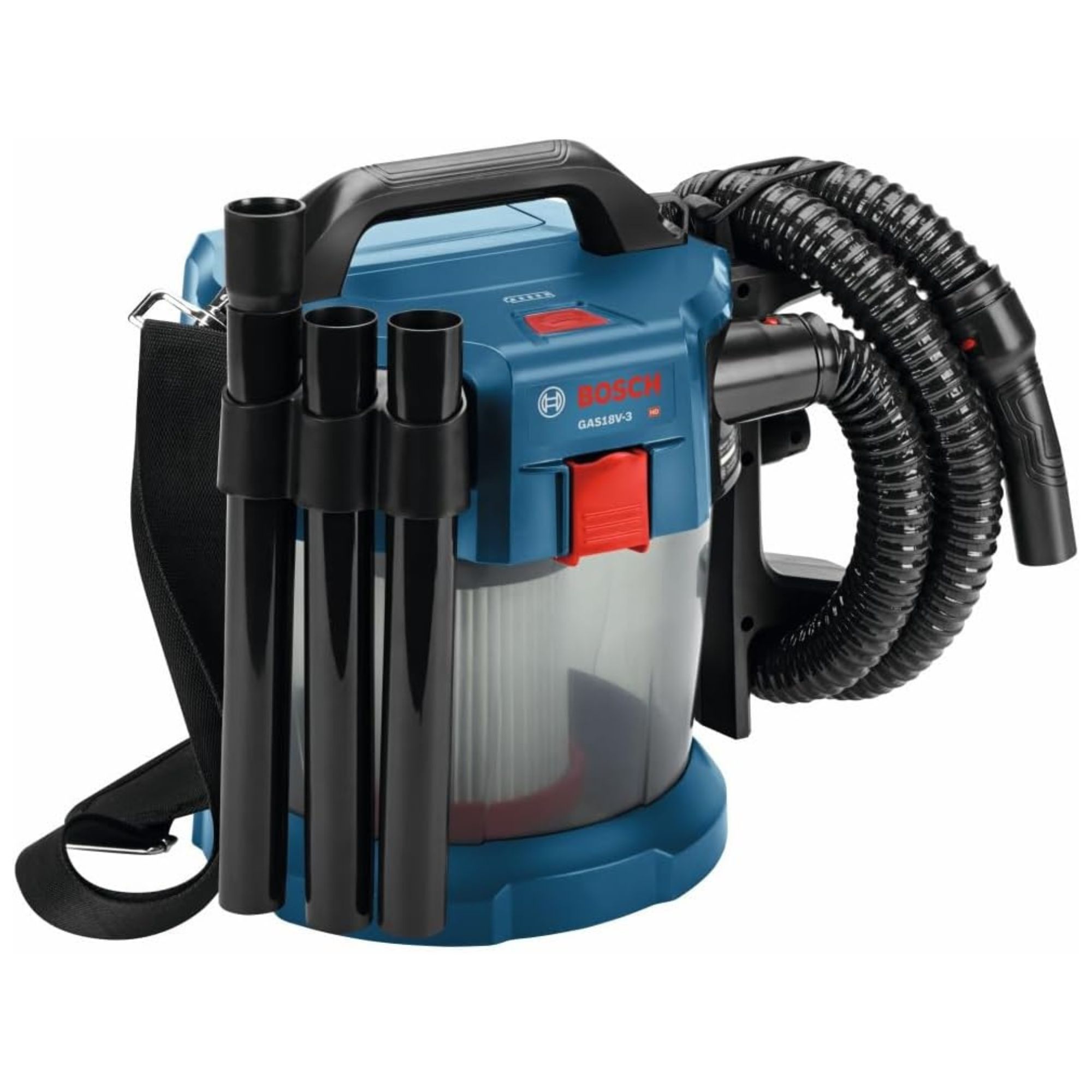Best car vacuums – our top wet/dry, cordless and upright vacs, plus recommendations from professional car cleaners
Along with our 200+ hours of vacuum testing, we spoke with professional car detailers to find out exactly what makes the best car vacuum
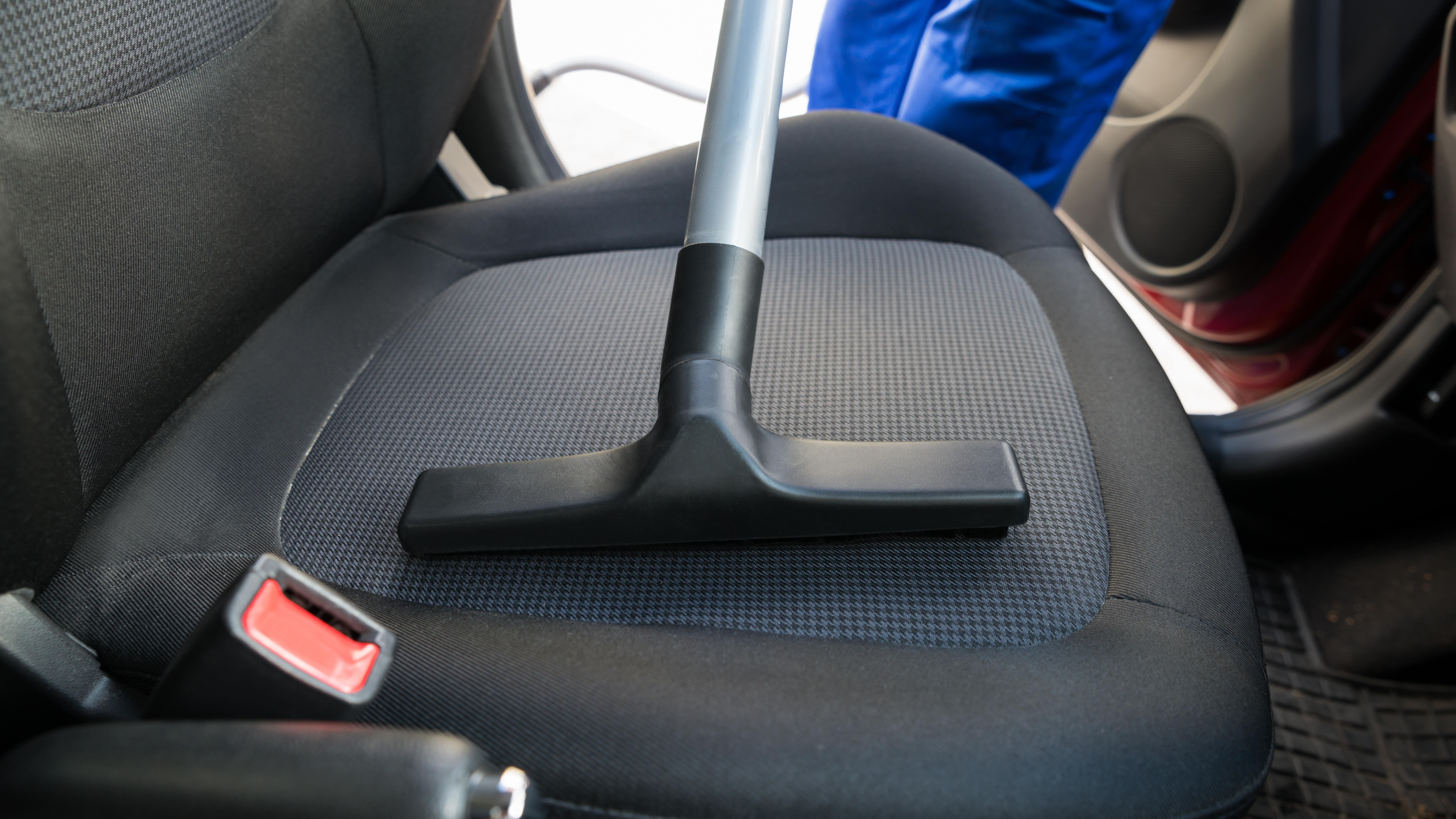

Vacuuming a car isn't quite the same as vacuuming your home. Rather than simply passing the floorhead forward and back, you need to be able to reach tight areas, get in between seats, and make sure you can dig hair and dirt out of the upholstery.
To determine which vacuum is the best for cars, we caught up with some leading, professional car detailers to learn everything they know about vacuuming vehicles. They gave us some useful insight (which you can find in detail at the how to choose section further down the page), and even gave us some recommended options that they've used themselves.
We weighed up these factors along with the results from our own tests on the world's best vacuums to compile this definitive list of the three best car vacuums, to help keep your vehicle as pristine as possible.
The quick list
Here are the three best car vacuums at a glance. The best option is undoubtedly the Shark MessMaster as it's portable, super easy to clean, can remove stains, and can handle wet and dry messes.
But if you'd rather have a more traditional vacuum, we've also included the best cordless option and the best upright option, which would both make light work of cleaning your car while also being a great investment for your home.
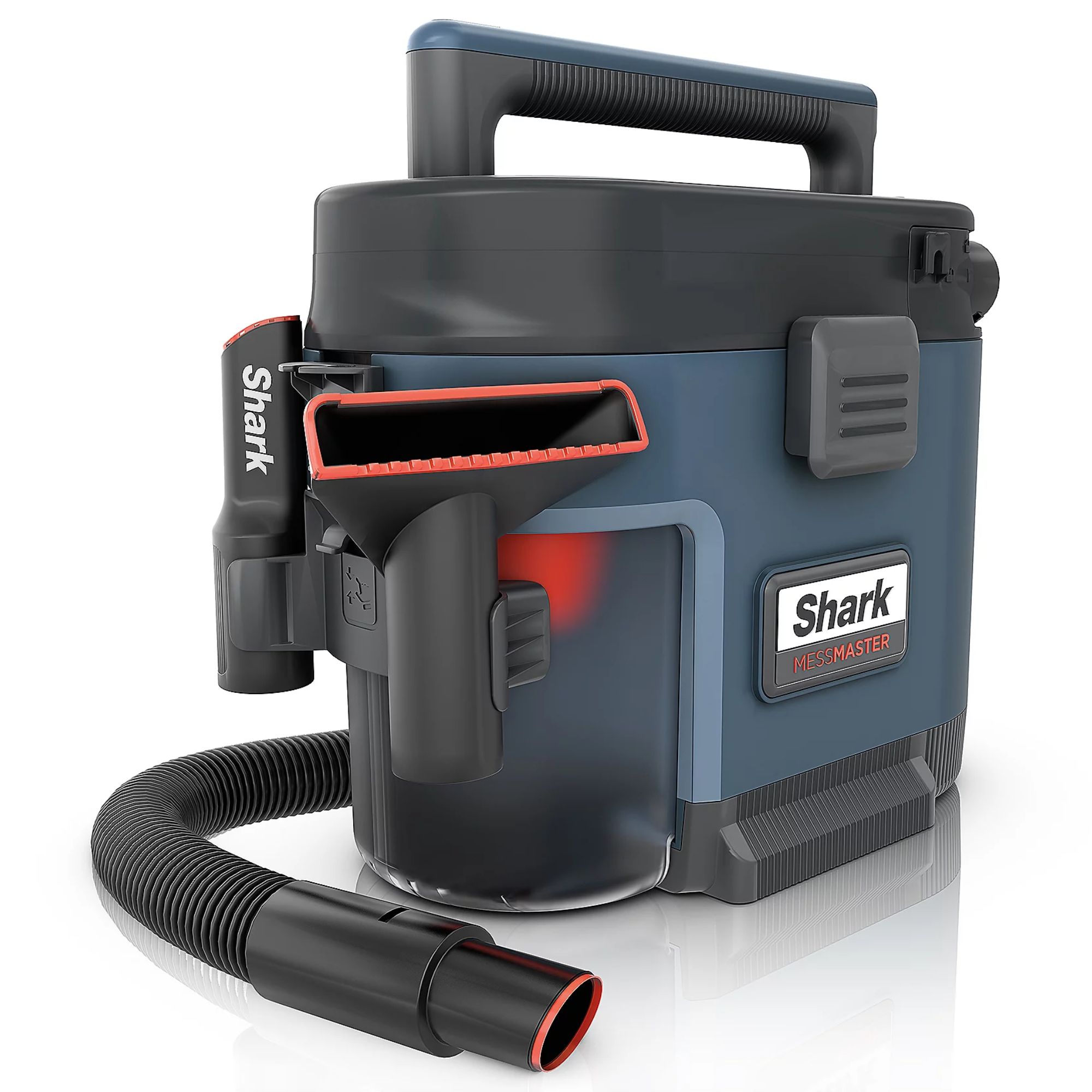
The best wet/dry vacuum for cars
Easily the best option in this guide, the Shark MessMaster can clean wet and dry messes, with a 3-foot long hose and all the right tools to get into the car's crevices and hard-to-reach areas.
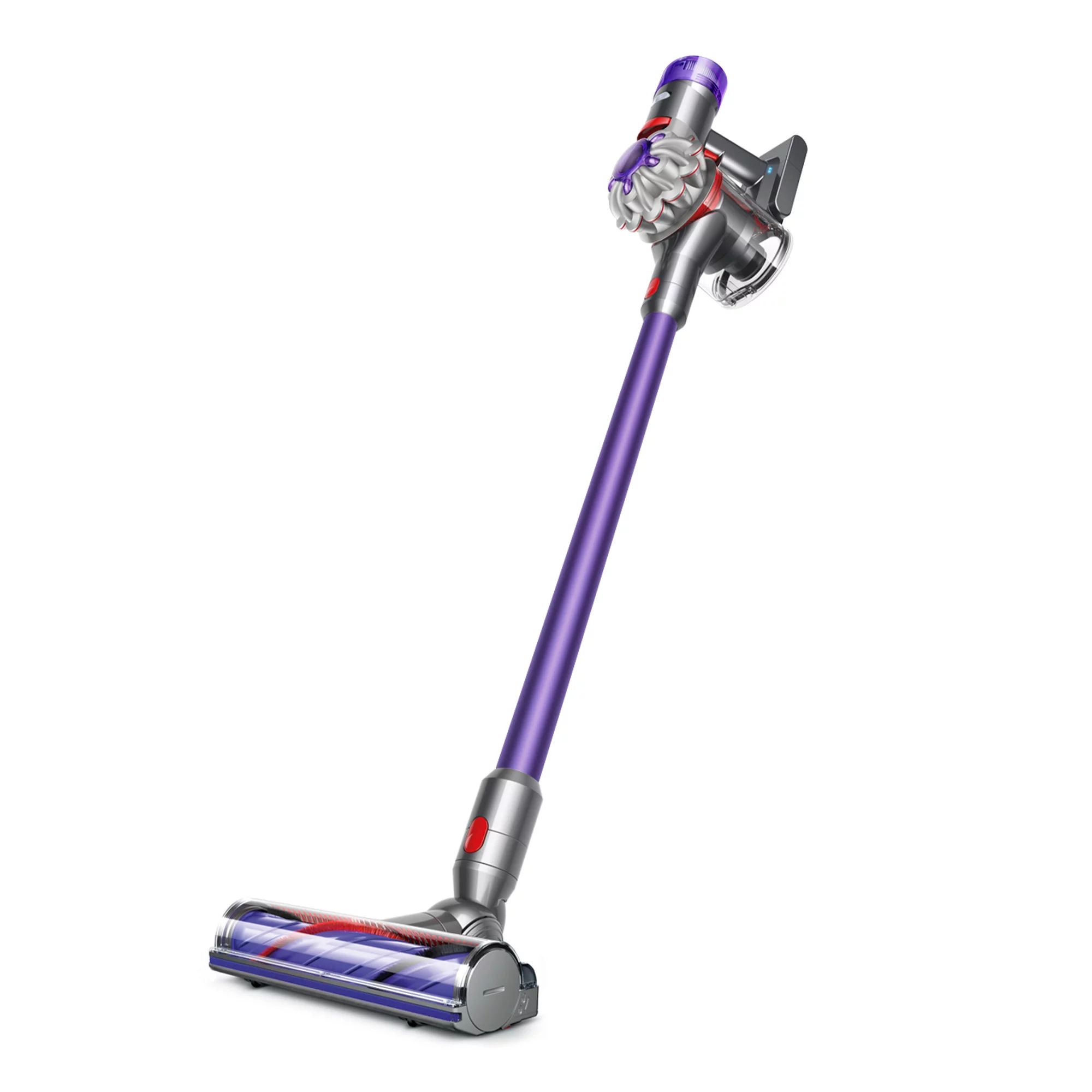
The best cordless vacuum for cars
With Dyson's famous, unbeaten suction power at a surprisingly reasonable cost, the V8 is perfect for cleaning cars with its crevice tool for tight spaces, and a motorized brush tool for digging deep into the upholstery.
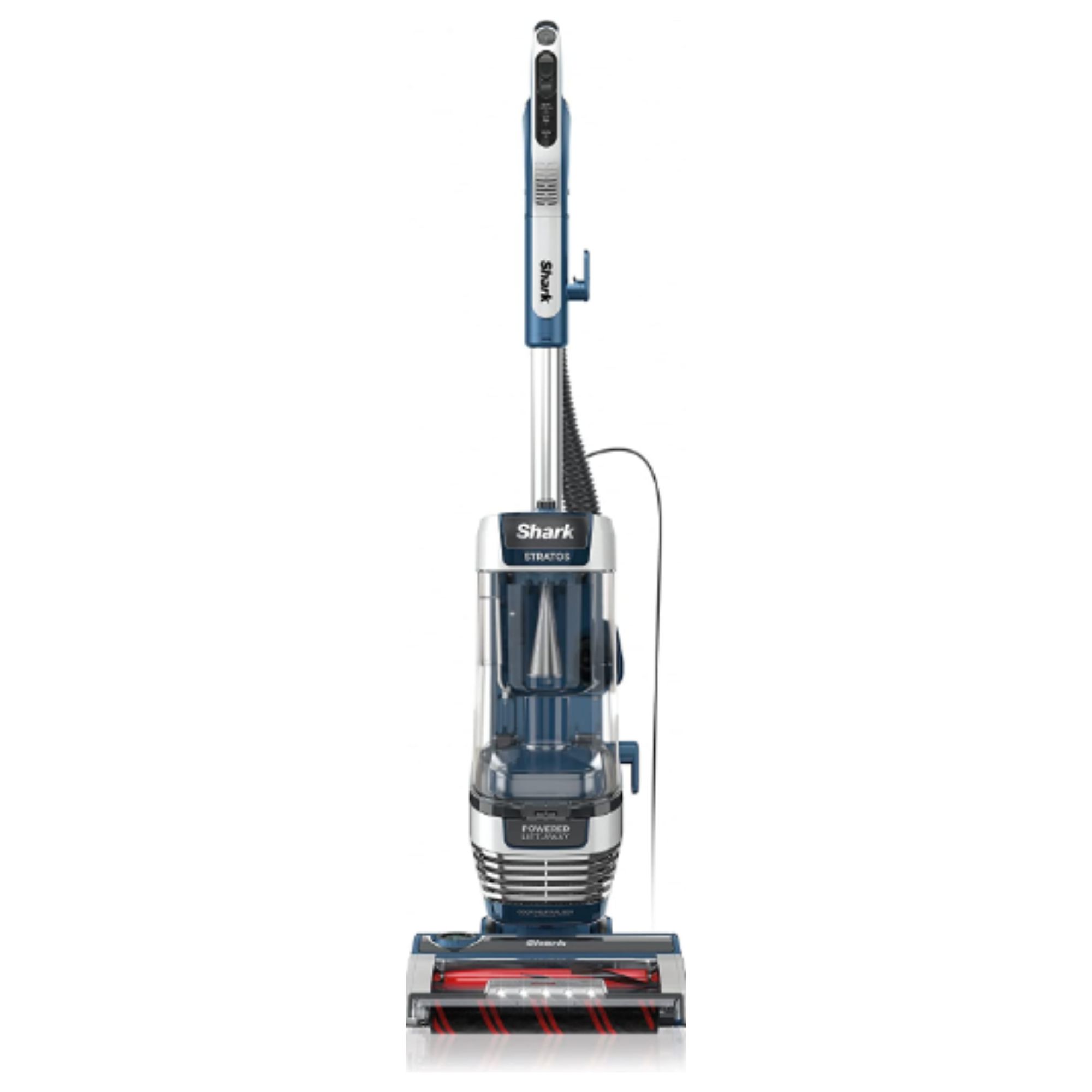
The best corded, upright vacuum for cars
For more intense suction power, the Shark Stratos will be able to pull all kinds of dirt and hair out of the car's materials, with a Powered Lift-Away mode for more flexibility when cleaning.
The best vacuum cleaners for cars
Explore our run-through of each of the top picks, with details on why they perform so well on cars. For more info, you'll be able to click through to each vacuum's individual review.
The best wet/dry car vacuum
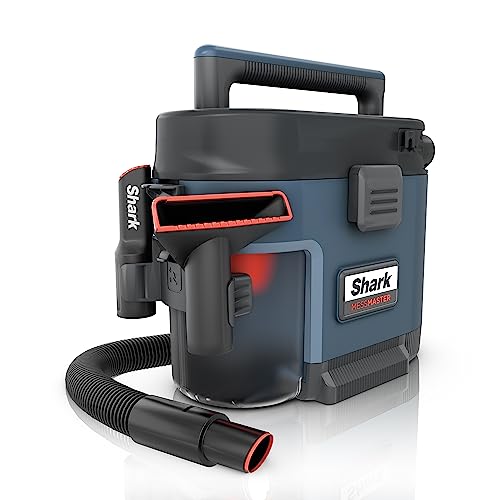
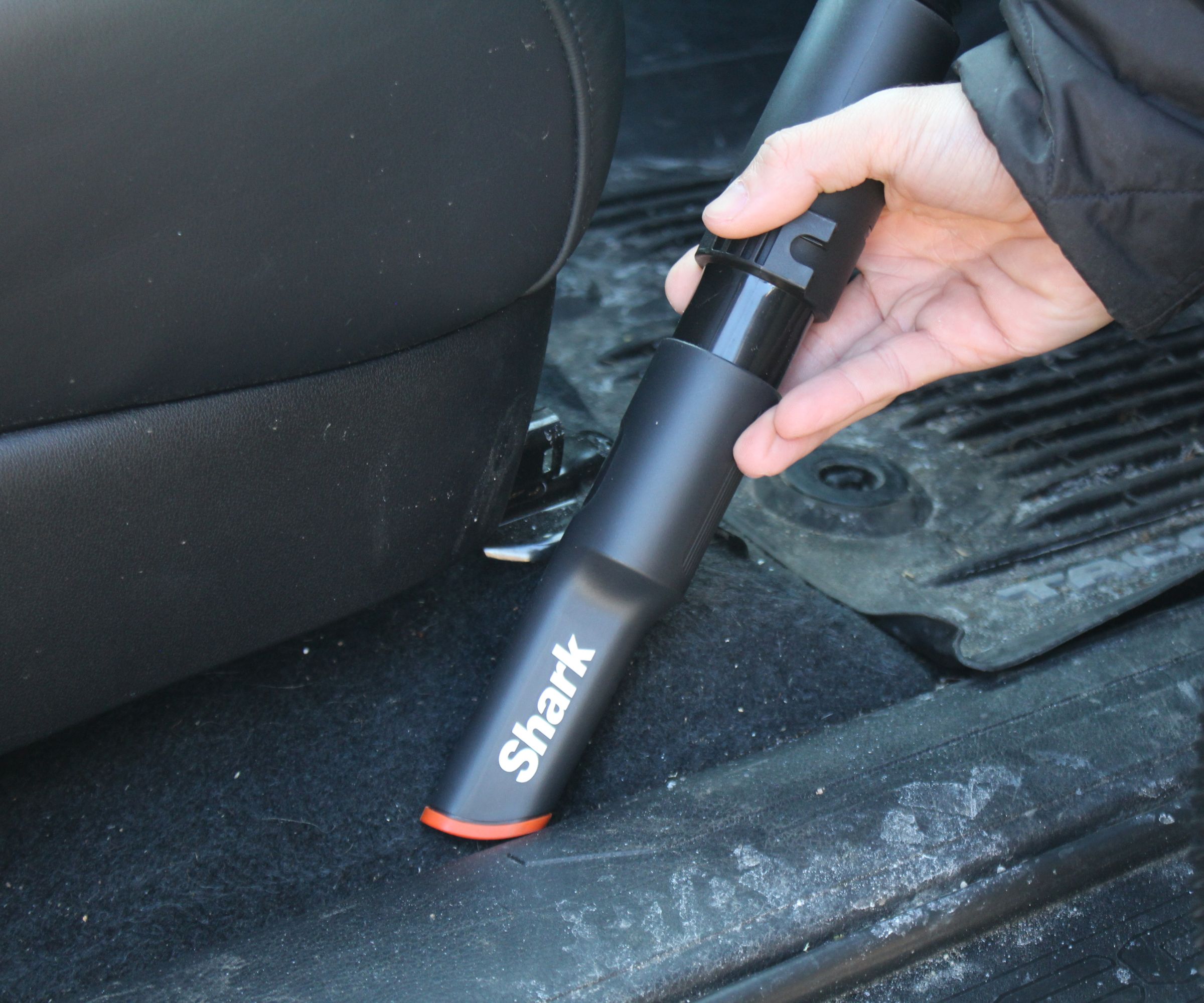
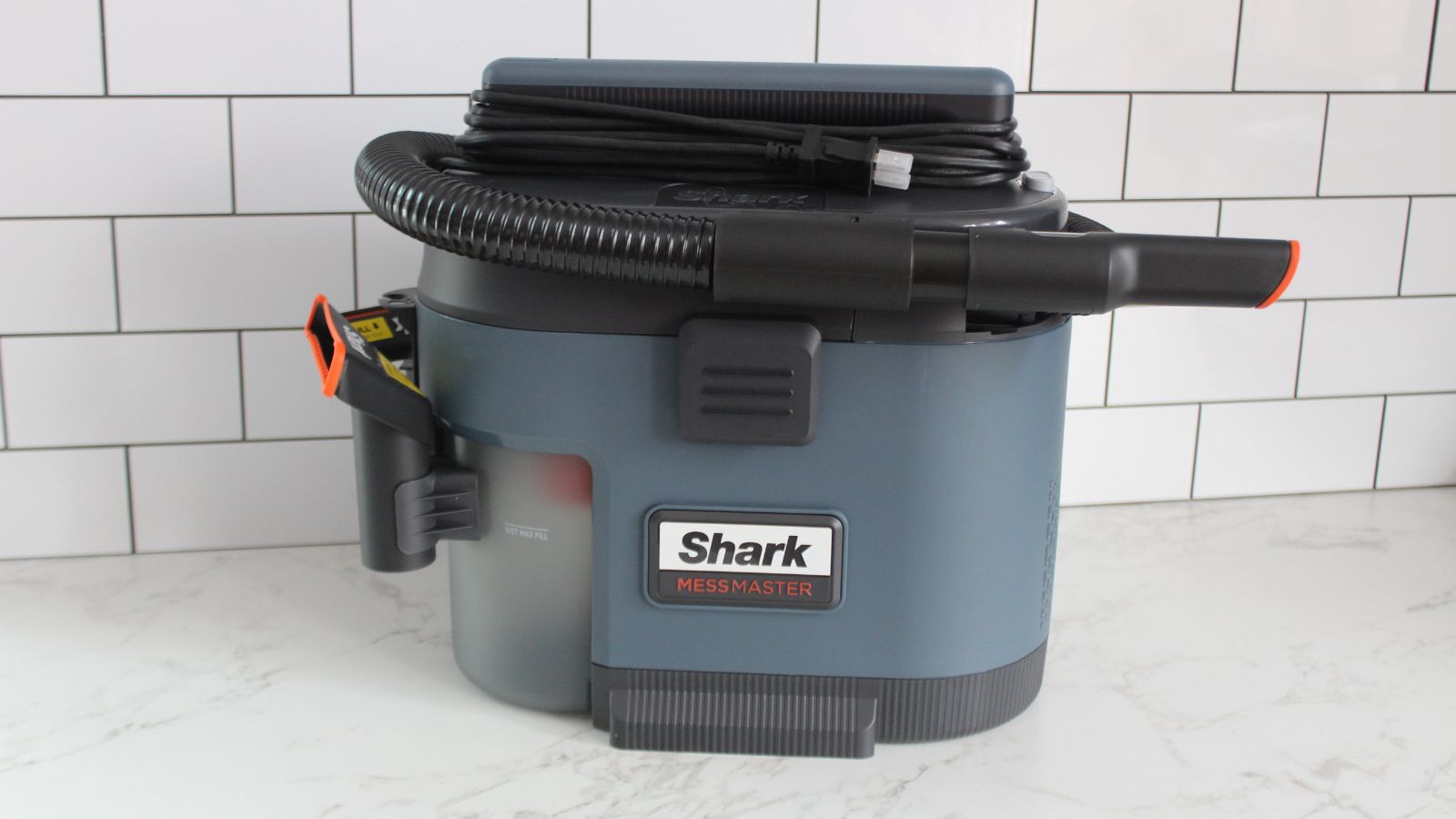
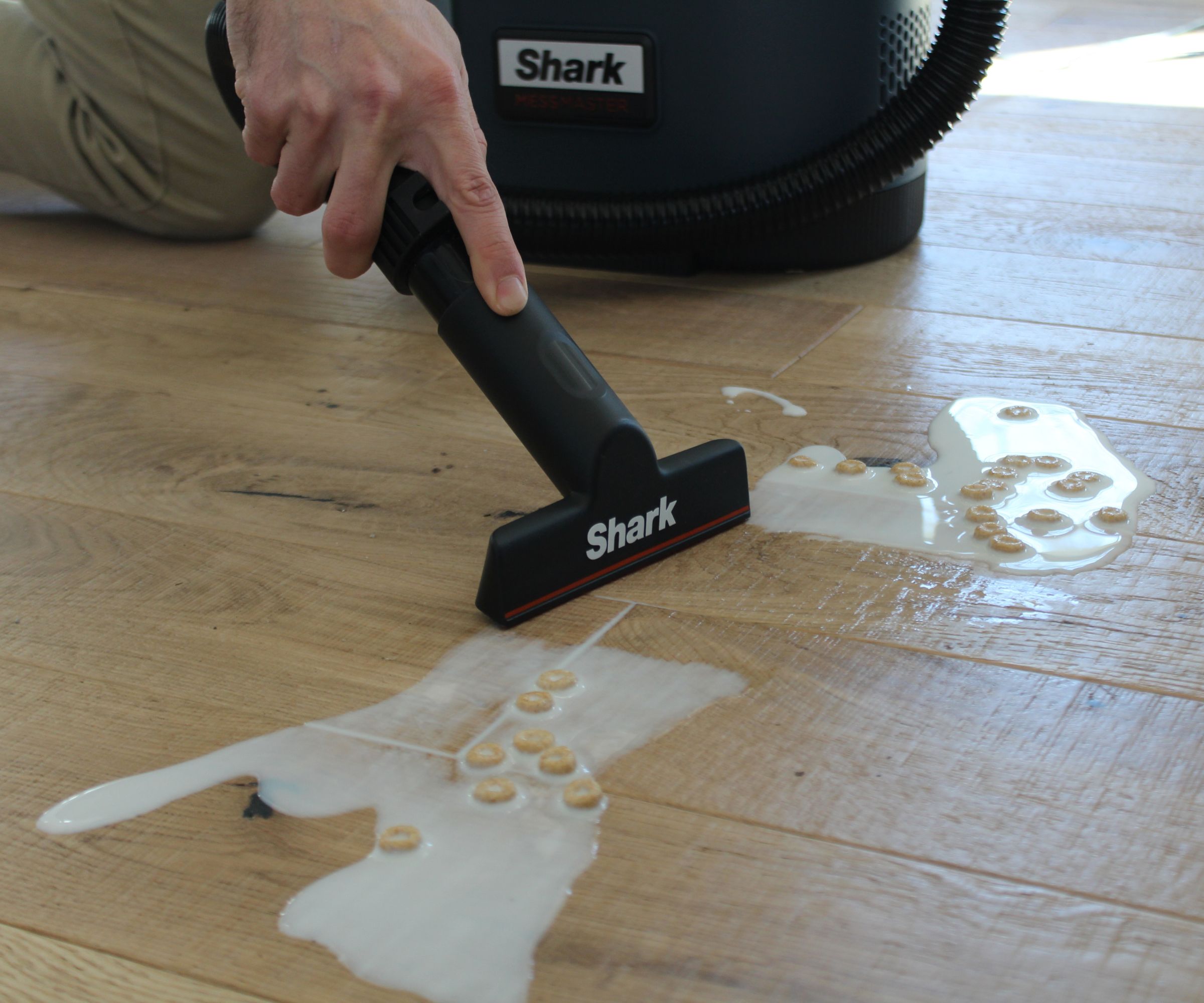
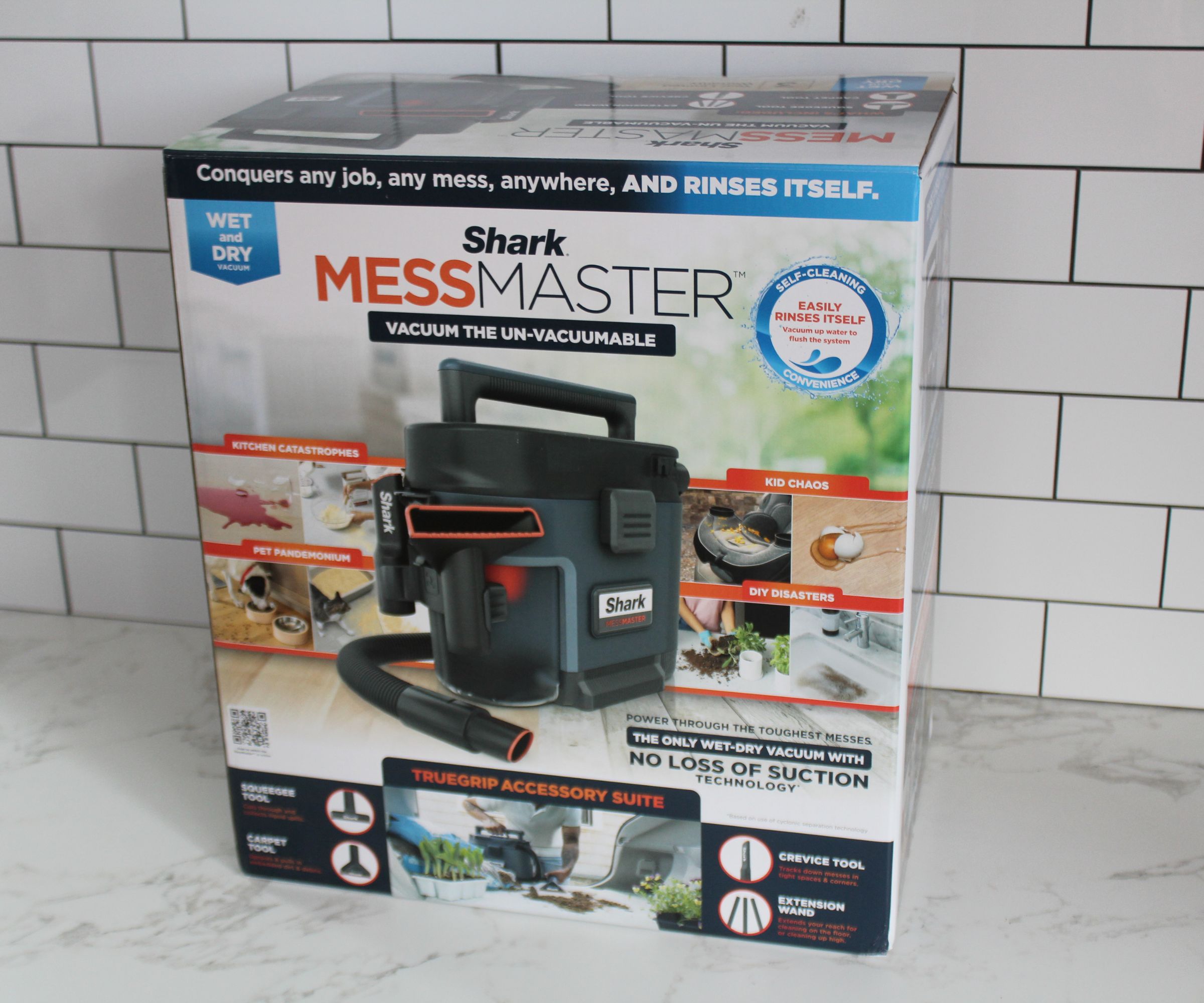
Specifications
Reasons to buy
Reasons to avoid
A wet/dry vacuum is your best option to truly deep clean your car. Our vehicles collect messes of all kinds, both solid and liquid, so it makes sense to opt for a vacuum that can handle all of it.
The Shark MessMaster is easily the best car vacuum we've tested. Not only is it a wet/dry vacuum, it's also compact and easily portable, with all of the right tools and attachments for getting into the crevices of a car.
'This is where the vacuum shined,' wrote tester Camryn Rabideau on using the MessMaster to clean her partner's truck. 'Its nozzle tool is perfect for getting into all the cracks and crevices around the car, and it’s easy to either hold the vacuum as you clean it or rest it on one of the seats.'
'The 3-foot hose was long enough to get into all the hard-to-reach areas, and the carpet/upholstery tool lifted dirt and debris off the carpeting and seats,' she added. The MessMaster is also able to be used with any bag that fits, and Camryn appreciated being able to capture all the dirt, pebbles, trash and hair into a plastic bag inside the vacuum, and then emptying it by simply throwing it away.
Aside from car cleaning, the MessMaster is a wonderful companion to have in the house to clean up any kitchen spills, pet accidents or DIY mess. After emptying it, you can easily rinse the machine by vacuuming water, or take the vacuum apart as each component is fully washable.
Read more in our full Shark MessMaster review.
The best cordless car vacuum

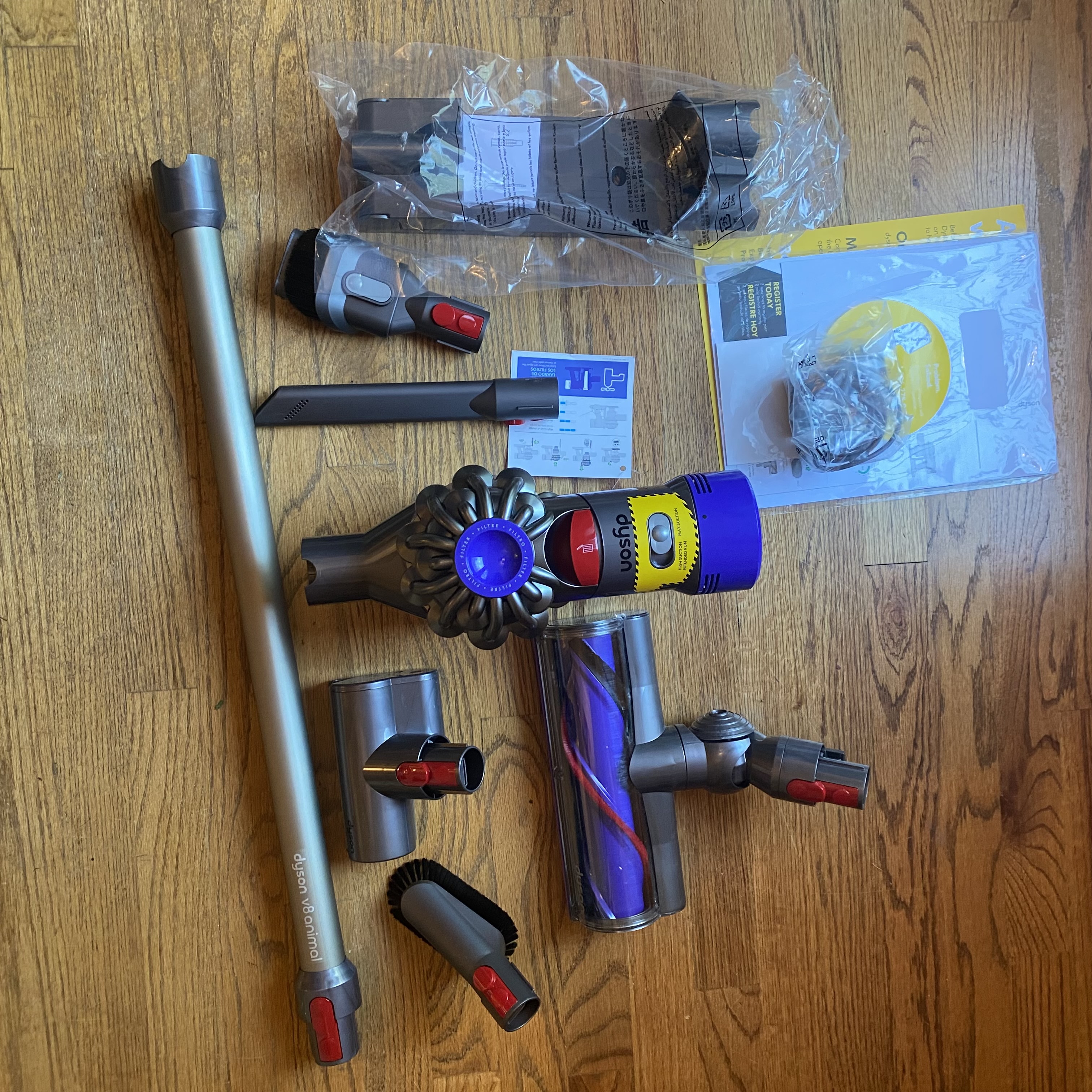
2. Dyson V8
Our expert review:
Specifications
Reasons to buy
Reasons to avoid
If you're thinking of opting for a cordless vacuum, you'll need to make sure it has strong, reliable suction. Cordless sticks typically offer the weakest suction compared with the various types of corded vacuum, but in doing so you gain more convenience and versatility.
We've tested a lot of the best cordless vacuums at H&G and, as much as we don't love the high price, Dyson vacuums always come out on top. Their suction power is unbeaten compared with the other brands and they also come with well-designed attachments for various cleaning tasks.
To get a Dyson vacuum without breaking the bank, the V8 is the perfect choice. You don't get the fancy features found in the V15 Detect and V12 Detect Slim, like the green laser, dust detection and particle counter, but these features aren't essential. When it comes to cleaning cars, you're looking for suction power and the right attachments – and the Dyson V8 has both.
'As expected, the Dyson V8 is an excellent handheld companion for cleaning in between the seats of the car,' tester Jaclyn Turner wrote. You'll also get the most out of the battery life in handheld mode, as you're only limited to up to 40 minutes with this model.
The crevice tool is of course helpful, but the V8 also comes with a motorized anti-tangle head that works wonders on car seats and floor mats, with bristles that make light work of any hair and fur.
It's not perfect, as evident from the limited dustbin capacity and battery life, but it should do the job if you don't mind preserving the battery or emptying it midway through the clean.
Read more in our full Dyson V8 review.
The best corded upright car vacuum

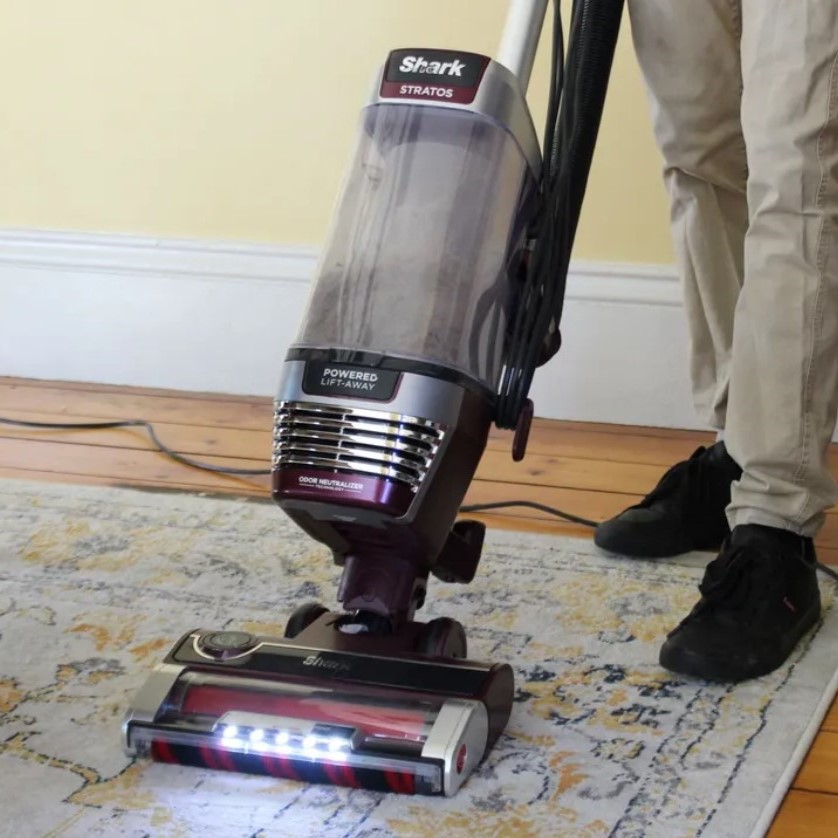
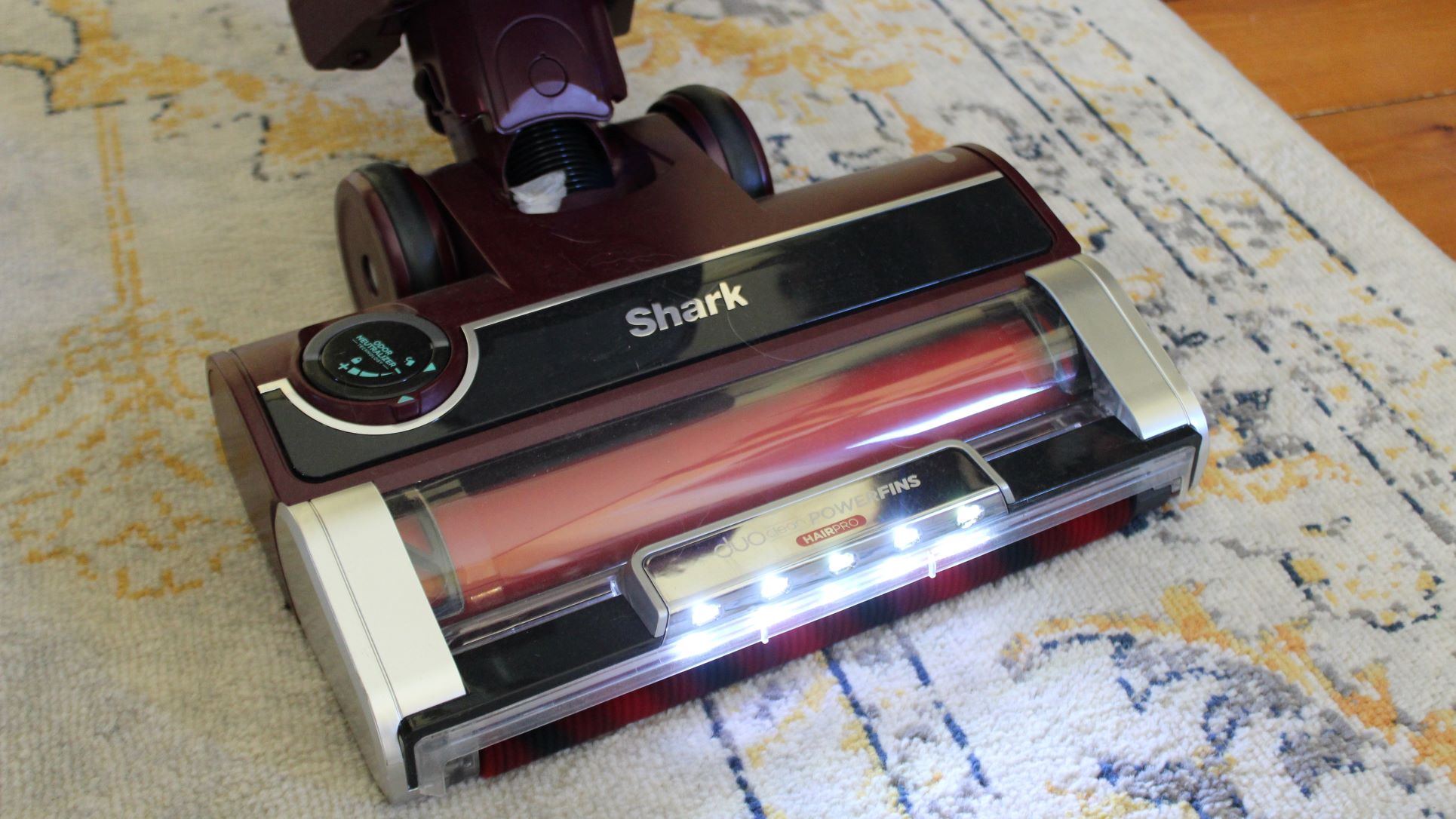
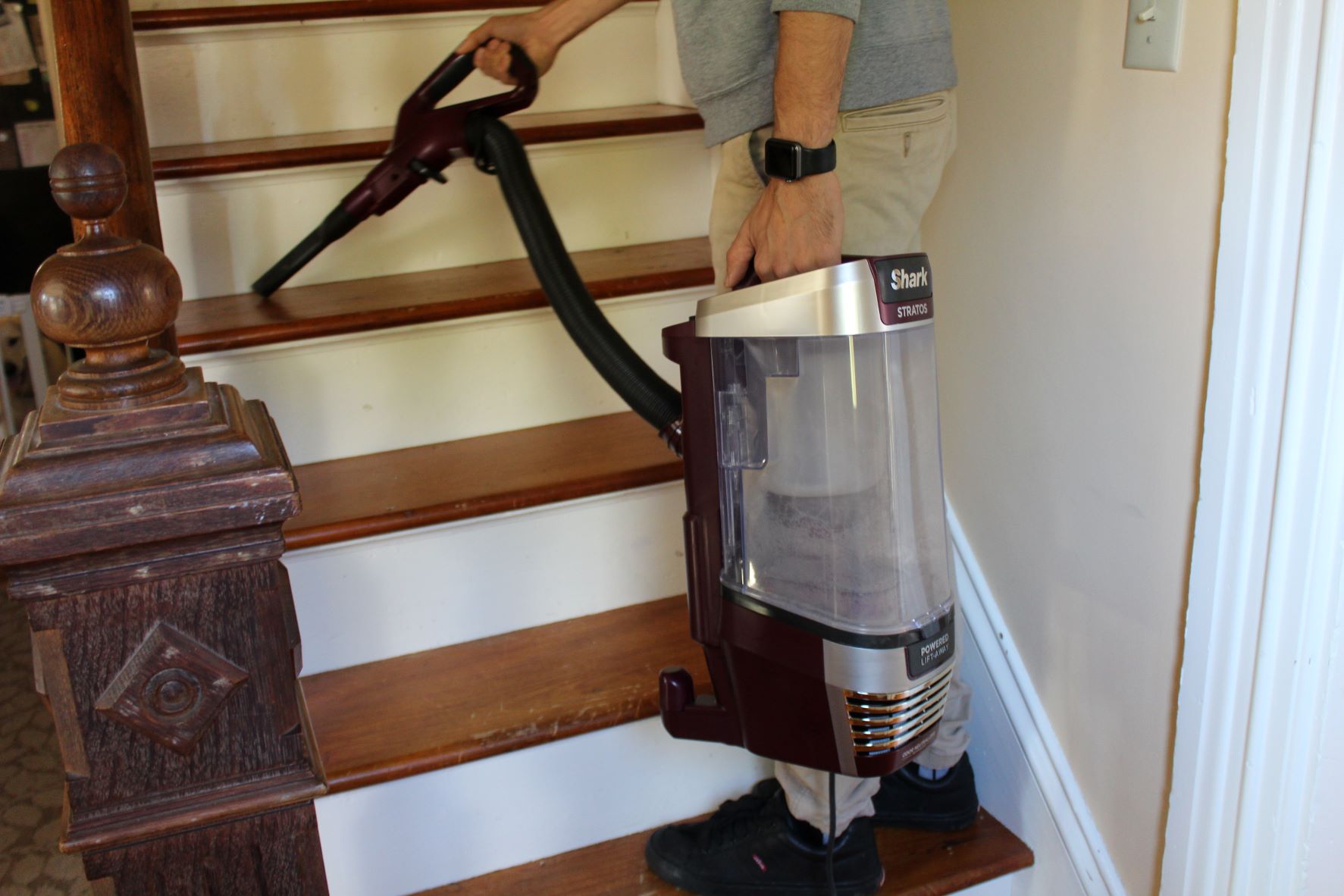
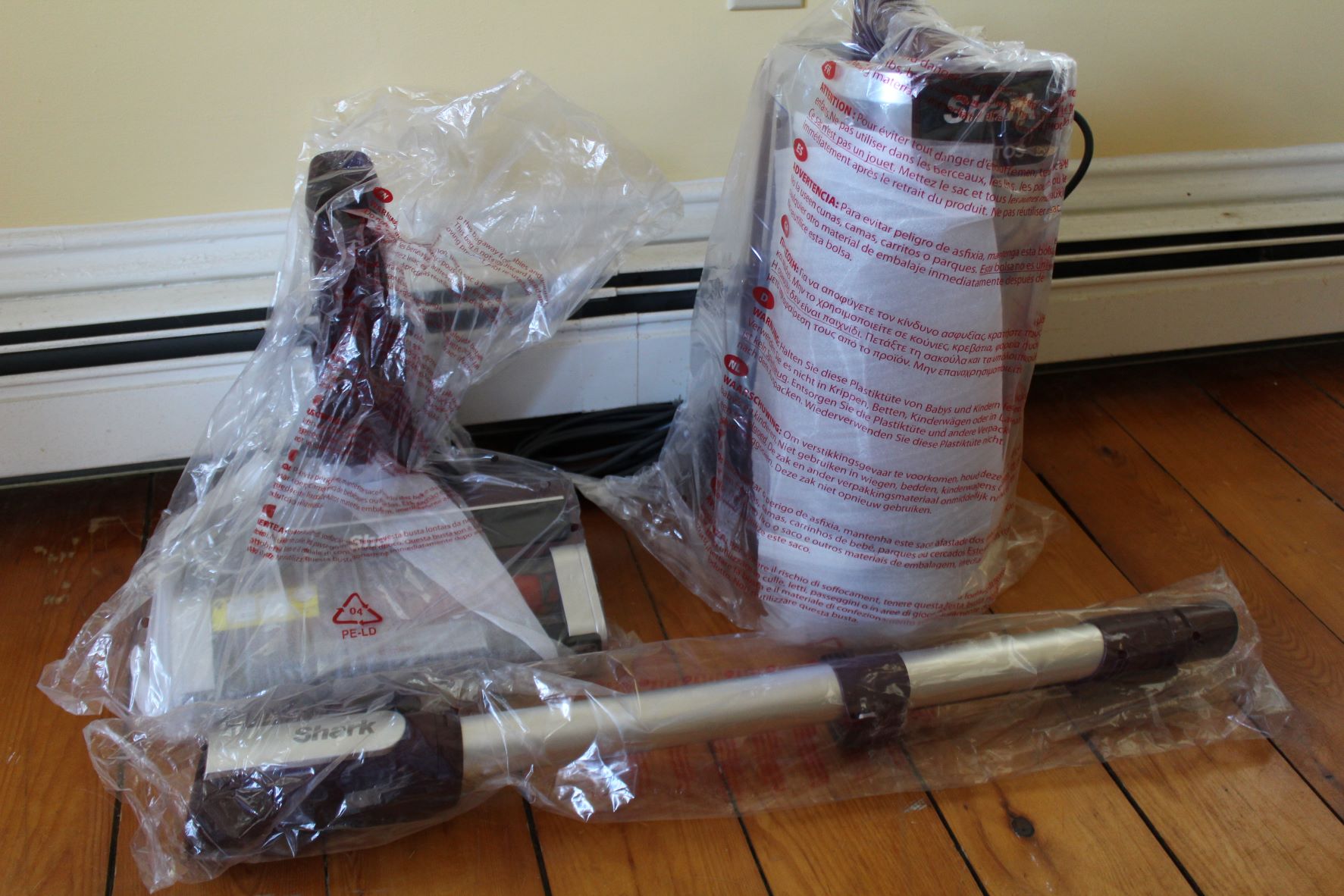
3. Shark Stratos Upright Vacuum
Our expert review:
Specifications
Reasons to buy
Reasons to avoid
An upright vacuum will provide much higher suction power than the others in this list, but with a sacrifice in movement. It's a heavier, bulkier option that relies on the length of the hose to be able to reach into the tight areas of the car.
That being said, the Shark Stratos is such an excellent option because of its Powered Lift-Away mode. You can lift the pod out of the main vacuum for more mobility when cleaning, leaving the heavier part outside as you reach deeper into the vehicle.
'When you press the LiftAway button on top of the canister, the whole thing lifts off the base, making it much more compact and lightweight. I could easily rest the canister on the stairs as I cleaned with the crevice tool,' shared tester Camryn Rabideau, highlighting how easy it could be to vacuum a car in this way.
It's also a tried-and-tested model from Shark, one of the leading brands in the upright vacuum market. 'I was honestly shocked at the pure suction power that the Shark Stratos delivers,' Camryn wrote. She found that when vacuuming her home's carpets, it excelled at removing dirt and pet hair, so a car's seats and mats would be light work in comparison.
It is unfortunately on the more expensive side, retailing for around $300-400 depending on offers. But a vacuum like this would be all you'd need for the home too, so you can easily view it as an investment.
Read more in our full Shark Stratos Upright Vacuum review.
How to choose a car vacuum
Parham Koukia, lead car detailer at PandaHub, always prioritizes suction power. 'A vacuum with strong suction is important for effectively removing dirt, debris, and pet hair, especially in hard-to-reach areas like between seats.' Suction power is typically measured in air watts, which accurately reflects the vacuum's cleaning power, but it can also be measured in watts, which shows the power rating in a more general sense.
It's also important to look for a vacuum that's lightweight and easily portable, as Parham emphasizes this makes it 'easier to move around vehicles without straining.' So, this could be a vacuum that's light in weight, allowing you to carry it around the car with ease (like a cordless stick). Or, to not sacrifice suction power, this could be a heavier vacuum with a long enough hose to easily maneuver and reach around the vehicle (like a canister or wet/dry vacuum).
This leads to one of the big questions when choosing the best car vacuum: cordless or corded? Professional car cleaners naturally have to get through a huge number of vehicles a day, so it's no surprise that they prefer corded vacuums. 'Corded vacuums usually have more power and can handle tougher jobs. I prefer them since I often spend more time on a job to ensure the car is thoroughly cleaned, and I prefer not to worry about battery life,' Parham shares. If opting for a corded vacuum, make sure the cord length and hose length are sufficient for what you need.
But cordless vacuums have their benefits, too. As Petar Dzaja from Car Detailing Planet explains, they can be the easy option for those who only have one car to clean, don't have nearby access to a plug or give their car only the occasional clean. That being said, cordless vacuums boast modular designs, and you can easily switch between a variety of attachments or transform the vacuum into handheld mode. You won't get as much power as you would with a corded vac, but you can't beat that level of versatility.
When considering the attachments, it's best to opt for a vacuum that has a select few that do the job well. 'When I started detailing, I thought I'd need ten attachments. Now, I only use 3-4 simple attachments,' Petar says.
He uses: 'One long and narrow to vacuum around the seats; one short and narrow for increased suction when vacuuming carpets; and one wider for vacuuming seats, doors, dashboard, etc.' Examples of these attachments are the crevice tool, extension wand, dusting brush, and multi-tool. Luckily, most vacuums come with some version of these attachments, but make sure to check.
'One thing I avoid is a vacuum that lacks proper filtration, like HEPA filters,' Parham explains. 'Without good filtration, the vacuum may end up blowing fine dust particles back into the car, which can undo all of your hard work and present potential health hazards.'
You'll also benefit from a vacuum that's easy to empty and clean, as you may have to do this midway through cleaning. A large dustbin/tank capacity will make a big difference too, as you can tackle more of the car (or potentially the whole car) before needing to empty.
Finally, consider your needs, and think about the type of messes you typically find in your car. If you have pets that frequently travel with you, it'd be smart to consider one of the best vacuums for pet hair because of their anti-tangle brushrolls and tight seals.
If your car has frequent liquid spills, like rainwater or food/drink messes, then it's definitely worth considering a wet/dry vacuum. We've found an abundance of reasons to upgrade to a wet/dry vacuum, whether it's for the car or the home, as their cleaning power covers more than your traditional vac.
Recommendations from professional car cleaners
We asked the car detailing pros which vacuums they recommend. We haven't tested these ourselves, but it'd be a shame not to share them with you.
'I prefer the RIDGID 5-gallon Portable Wet/Dry Vacuum,' says award-winning car detailer Parham Koukia. 'It’s one of my favorites because it’s compact but packs 5 horsepower, it’s pretty powerful for the size. It’s small enough to move around easily but has the power to handle tough messes effectively.' It's available for just $104 at Home Depot.
'At the moment, I have Bosch industrial vacuum, available at Amazon for $149, and it's been working great for more than a year already,' says car detailer Petar Dzaja. 'But one of the best vacuums that I've tried is the Ridgid RT1200 NXT 12-gallon vacuum, available at Toolup for $128.17. It's powerful, has a bunch of attachments, and can be used as a wet vac as well.'
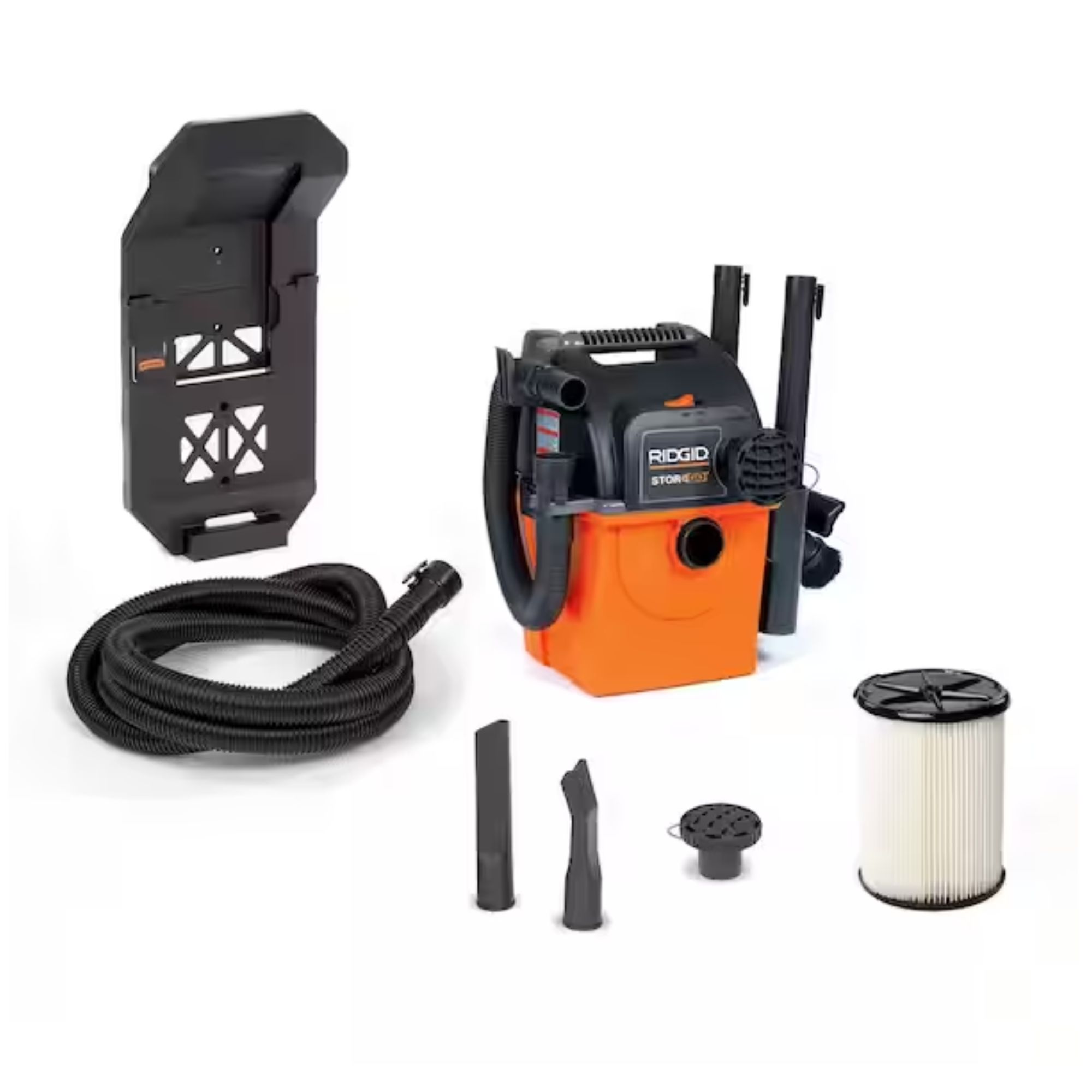
A powerful vacuum capable of cleaning wet and dry messes, with a wall mount for convenient storage. It comes with two locking hoses, two extension wands, utility nozzle, car nozzle, crevice tool, dusting brush, and RIDGID's lifetime warranty.
Meet the team

I'm the home tech editor for Homes & Gardens, focusing almost exclusively on the vast world of vacuum cleaners. I have been reviewing products for years now and have spent many dozens of hours testing vacuum cleaners both in our dedicated center, and my home.

Camryn is a freelance writer and product reviewer who has tested more than 100 vacuum over the years in her homestead in Rhode Island, including the Shark MessMaster and Shark Stratos Upright.
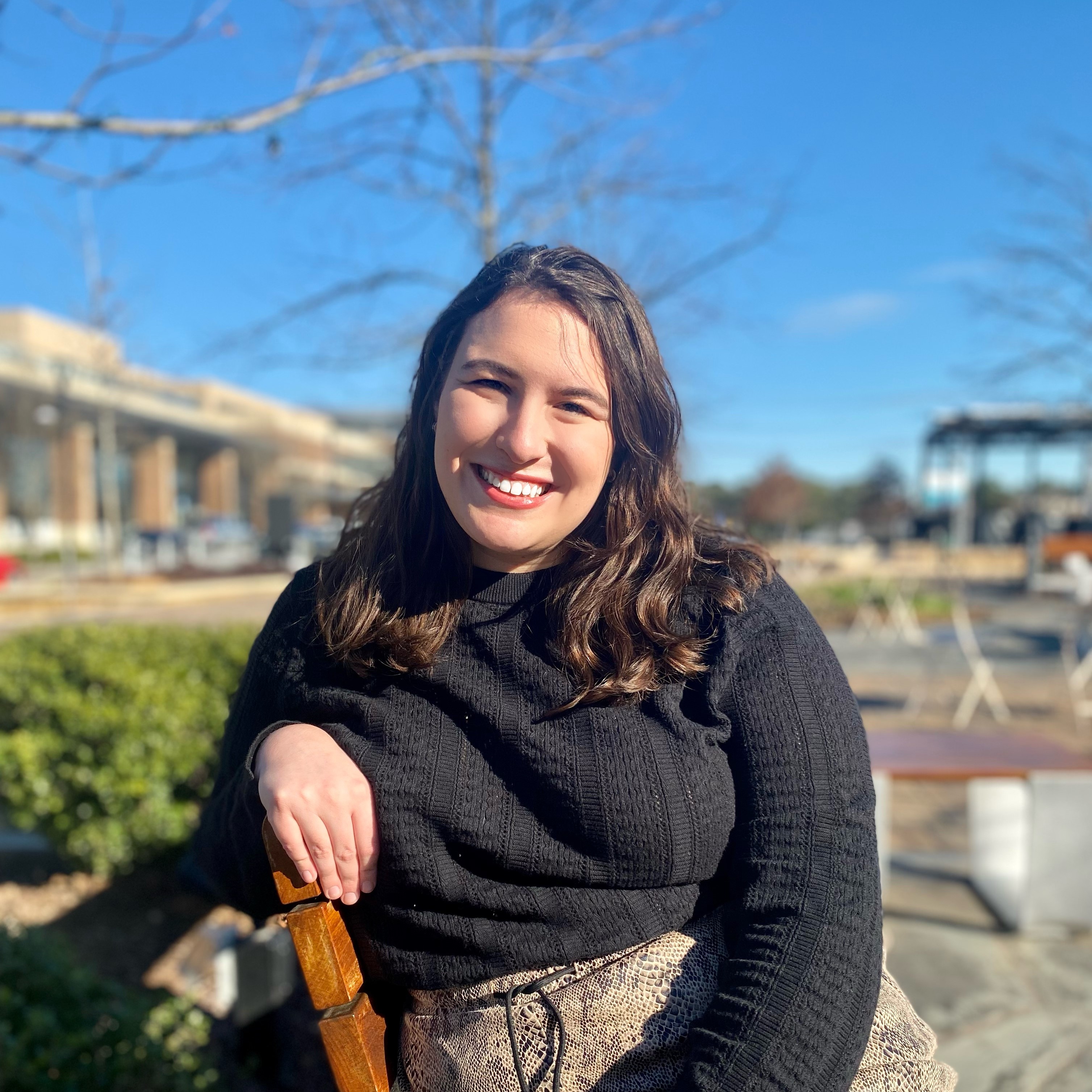
Jaclyn was an eCommerce editor for Homes & Gardens, where she oversaw sleep content including mattresses and bedding. She's tested a number of vacuums for H&G including the Dyson V8.
How we test vacuums for cars
At Homes & Gardens we like to get hands-on experience with all the products we feature. You can learn more how we test products in our dedicated guide, and there's a more specific rundown of our vacuum test process in how we test vacuums.
All of our vacuums are tried and tested in our test center and in our own homes. When in the test center, we assess each vacuum on carpet, linoleum and wood flooring. We test their suction power with flour and sugar, which is a common kitchen spill, but also a good substitute for naturally occurring particles in our homes such as dust and dead skin. We also use cereal on different flooring types to see how well each upright vacuum picks up larger debris such as crumbs and small stones, and most of all, on old hair extensions, which helps demonstrates during testing how well a vacuum can pick up hair, and whether or not hair gets stuck in its rollers. This gives us a good indication of the level of care and upkeep it'll need moving forward.

When testing car vacuums, it's important to note how well the attachments work, how long the hose or wand is, and whether it's strong enough to suck the debris and hair out of the car's fabrics. If we're testing a cordless model, we observe whether the battery lasts long enough to clean the whole car, and how easy it is so assemble the attachments and switch to handheld mode.
We test the vacuum cleaners for a number of weeks so that we know our tests aren't a one-off fluke. In some instances, we are also fortunate enough to keep the vacuum cleaners after writing up the review so we can continue to learn about them over months or even years and share our findings with you as the vacuums pick up wear and tear as they age.
Best car vacuums – Glossary
- Wet/dry vacuum: A vacuum that's able to handle both wet and dry messes, typically more rugged and durable and can often be used outdoors.
- Upright vacuum: One of the most familiar types of vacuum cleaner, usually corded with a large dustbin and powerful floorhead.
- Floorhead: The main vacuum cleaner attachment for floor cleaning (i.e. not the crevice tool, dusting brush etc). Some vacuums have separate floorheads for hard floors and carpets.
- Brush roll: Rotating cylinders within the floorhead (and occasionally in smaller, motorized attachments). They can be soft, fluffy rollers for hard floors or bristled to dig deep into carpets. Many vacuums from brands like Shark and Dyson will have two brush rolls in their main floorhead.
- Wand/hose: Long tube connecting the vacuum cleaner to the floorhead or any attachments (see here for what all the vacuum cleaner attachments do, like the crevice tool or dusting brush).
- Filter: Responsible for trapping the debris and particles as air passes through. Vacuums can have pre-motor filters and post-motor filters, to trap debris of different sizes at different points along the airflow.
- HEPA filter: Filter type that's able to capture at least 99.97% of particles as small as 0.3 microns. It's a necessity in a pet hair vacuum as it's able to trap allergenic particles like pet dander (and household allergens like dust and pollen).
- Motor: The core component of a vacuum cleaner (it's also referred to as a suction motor). This is what converts the electrical power into mechanical power to create suction and airflow.
- Power/air watts: A vacuum cleaner's power is best measured via air watts, reflecting the airflow and suction power in real terms. It's calculated by multiplying the airflow (in cubic metres per second) by the suction pressure (in pascals), accounting for variables like blockages or different-sized openings (from different vacuum attachments, for example).
FAQs
What attachments do I need for a car vacuum?
As covered in our how to choose a car vacuum section, you're ideally looking for:
- A crevice tool to get into the tight areas, like between and under the seats
- An extension wand for areas that are harder to reach
- A brush tool or wide nozzle to pull up dirt and hair from the seats and upholstery
What's good suction power for a car vacuum?
To be honest, a good suction power for a car vacuum is similar to what you'd need around the house. Aim for 150-200 air watts as a minimum, but anything more than that would make things even easier.
Looking for more vacuum buying advice? Consider one of the best Dyson alternatives or best vacuums for pet hair instead.
Sign up to the Homes & Gardens newsletter
Design expertise in your inbox – from inspiring decorating ideas and beautiful celebrity homes to practical gardening advice and shopping round-ups.

Dan is the Home Tech Editor for Homes & Gardens, covering all things cleaning, smart home, sound and air treatment across the Solved section. Having worked for Future PLC since July 2023, Dan was previously the Features Editor for Top Ten Reviews and looked after the wide variety of home and outdoor content across the site, but their writing about homes, gardens, tech and products started back in 2021 on brands like BBC Science Focus, YourHomeStyle and Gardens Illustrated.
They have spent more than 200 hours testing and reviewing vacuums for Homes & Gardens, and have even visited Dyson's engineering labs for the full low-down of the ins and outs of our trusty cleaners.
Dan has a BA in Philosophy and an MA in Magazine Journalism. Outside of work, you'll find them at gigs and art galleries, cycling somewhere scenic, or cooking up something good in the kitchen.
-
 These are the 6 must-have colors to decorate with in April 2025
These are the 6 must-have colors to decorate with in April 2025What do retro-inspired yellows and beautiful blues all have in common? They're on our hot list for the season ahead
By Sophia Pouget de St Victor Published
-
 Plants never to grow next to fruit trees
Plants never to grow next to fruit treesExpert advice on which plants to keep away from fruit trees to encourage a healthy harvest
By Jacky Parker Published
-
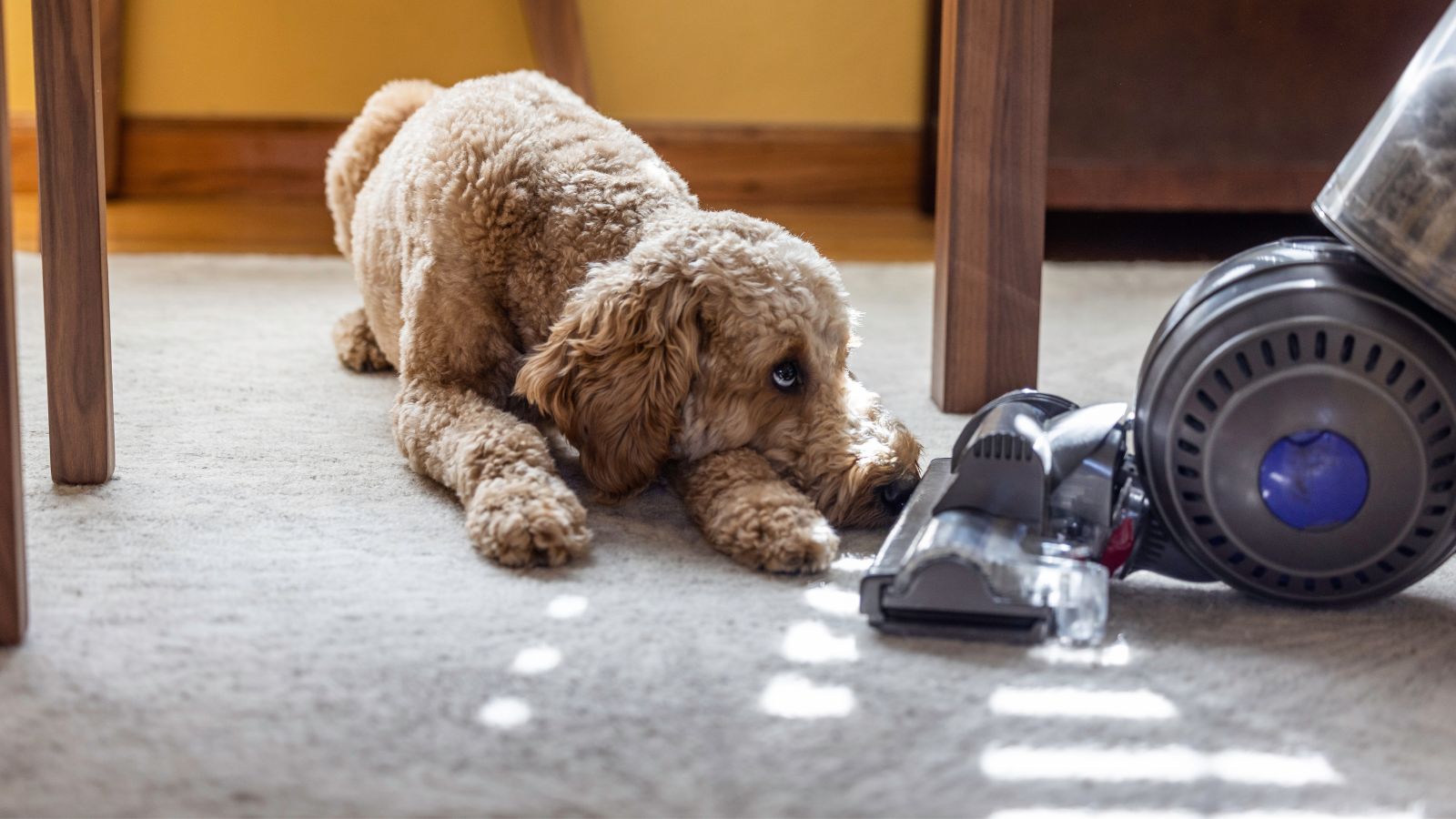 The 7 best vacuum cleaners for carpet – tested by our appliance editors for deep cleaning across all carpet types
The 7 best vacuum cleaners for carpet – tested by our appliance editors for deep cleaning across all carpet typesTo find vacuum cleaners that can properly tackle high-pile and low-pile carpets, we've spent hours testing the world's best
By Dan Fauzi Published
-
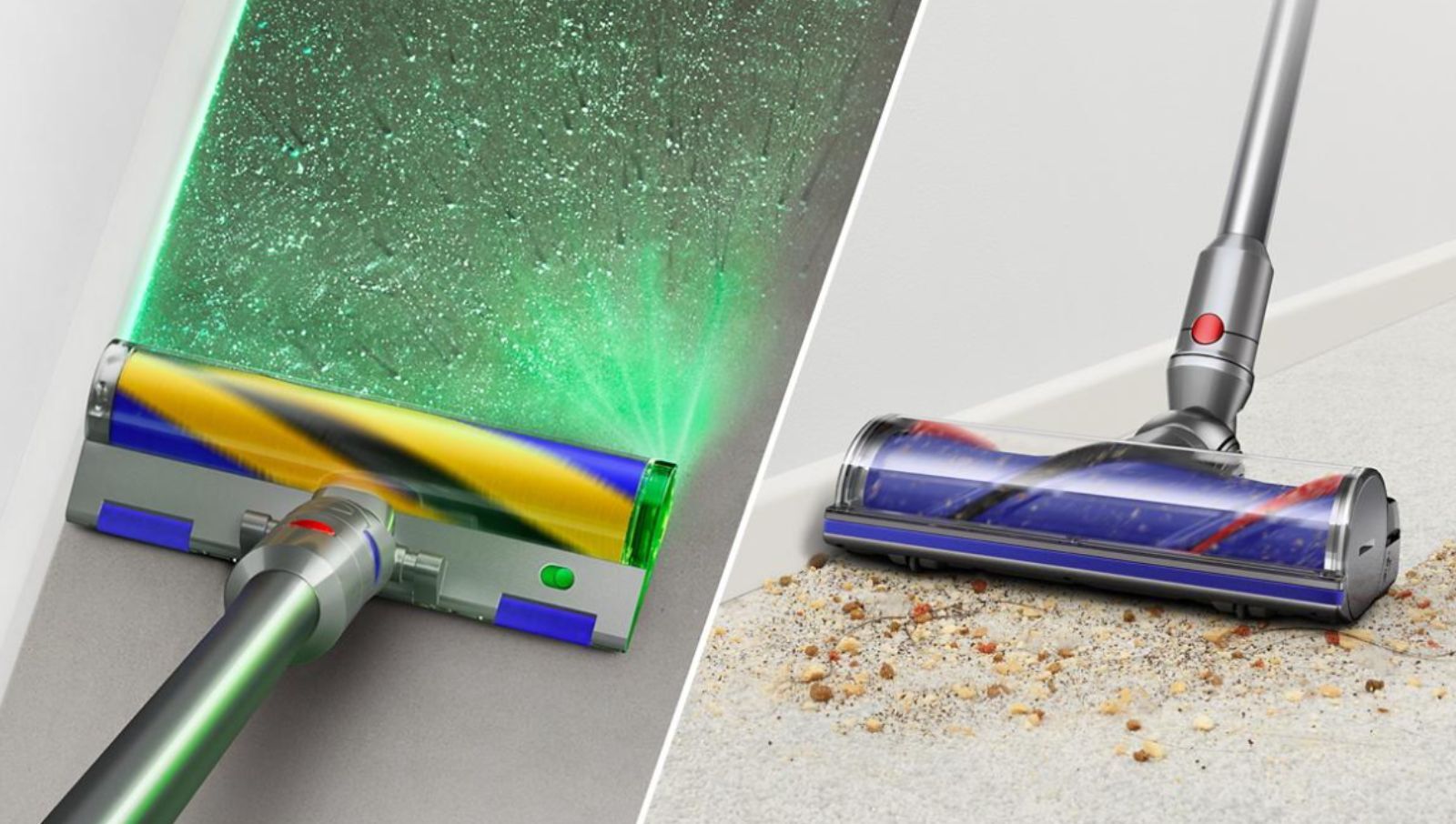 Dyson V12 Detect Slim review – impressive power at a reasonable price
Dyson V12 Detect Slim review – impressive power at a reasonable priceThe V12 Detect Slim is a more affordable offering from Dyson, carrying their unrivaled 'detect' technology in a slimmer and lighter design
By Dan Fauzi Published
-
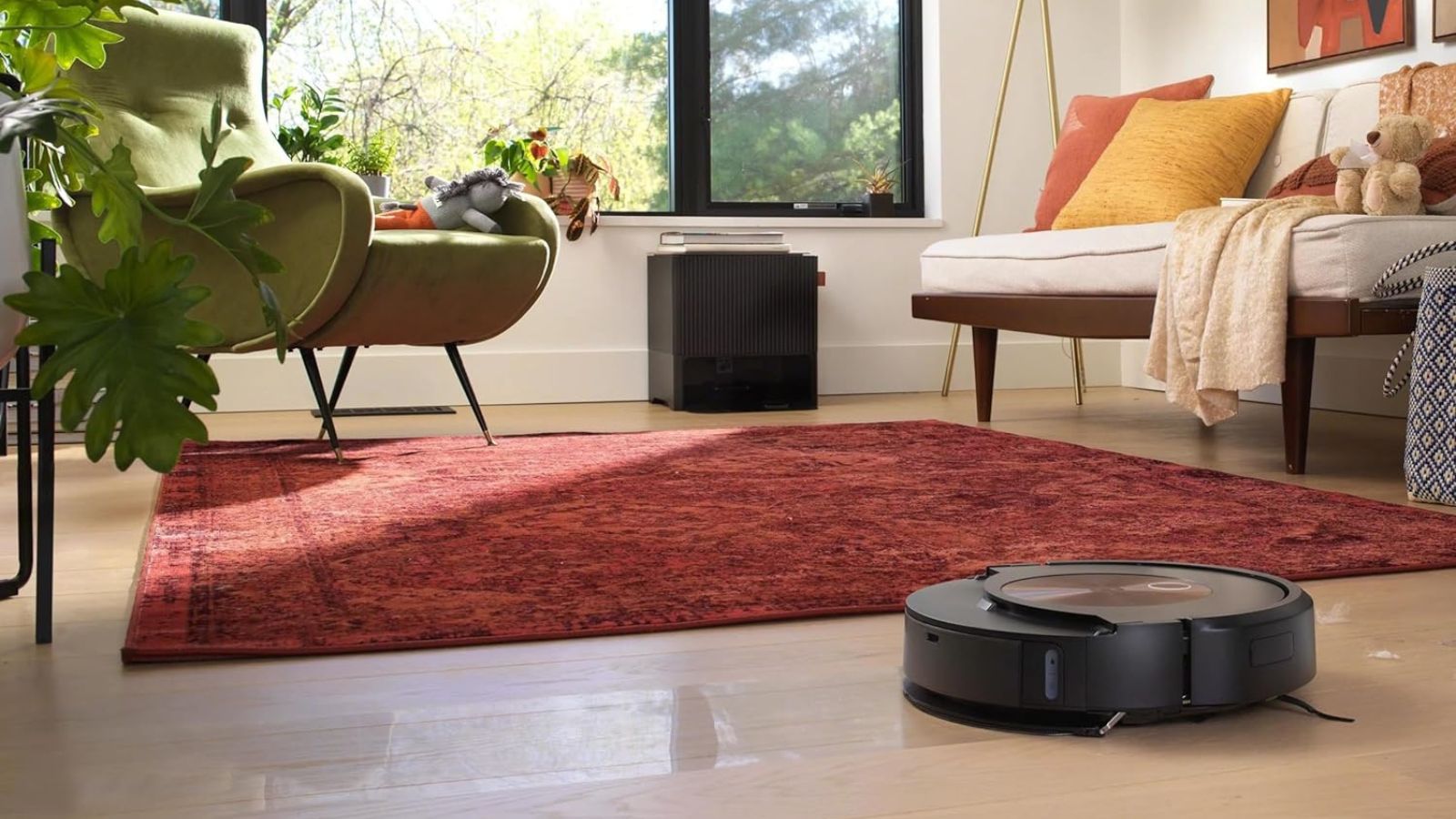 iRobot Roomba Combo j9+ robot vacuum review – 1 year of use later, this remains one of the best I've tested and is worth every cen
iRobot Roomba Combo j9+ robot vacuum review – 1 year of use later, this remains one of the best I've tested and is worth every cenThe iRobot Roomba Combo j9+ vacuum and mop is the best robot I've ever tested. After trialling it for more than a month, I found it's one of the very best.
By Alex David Published
-
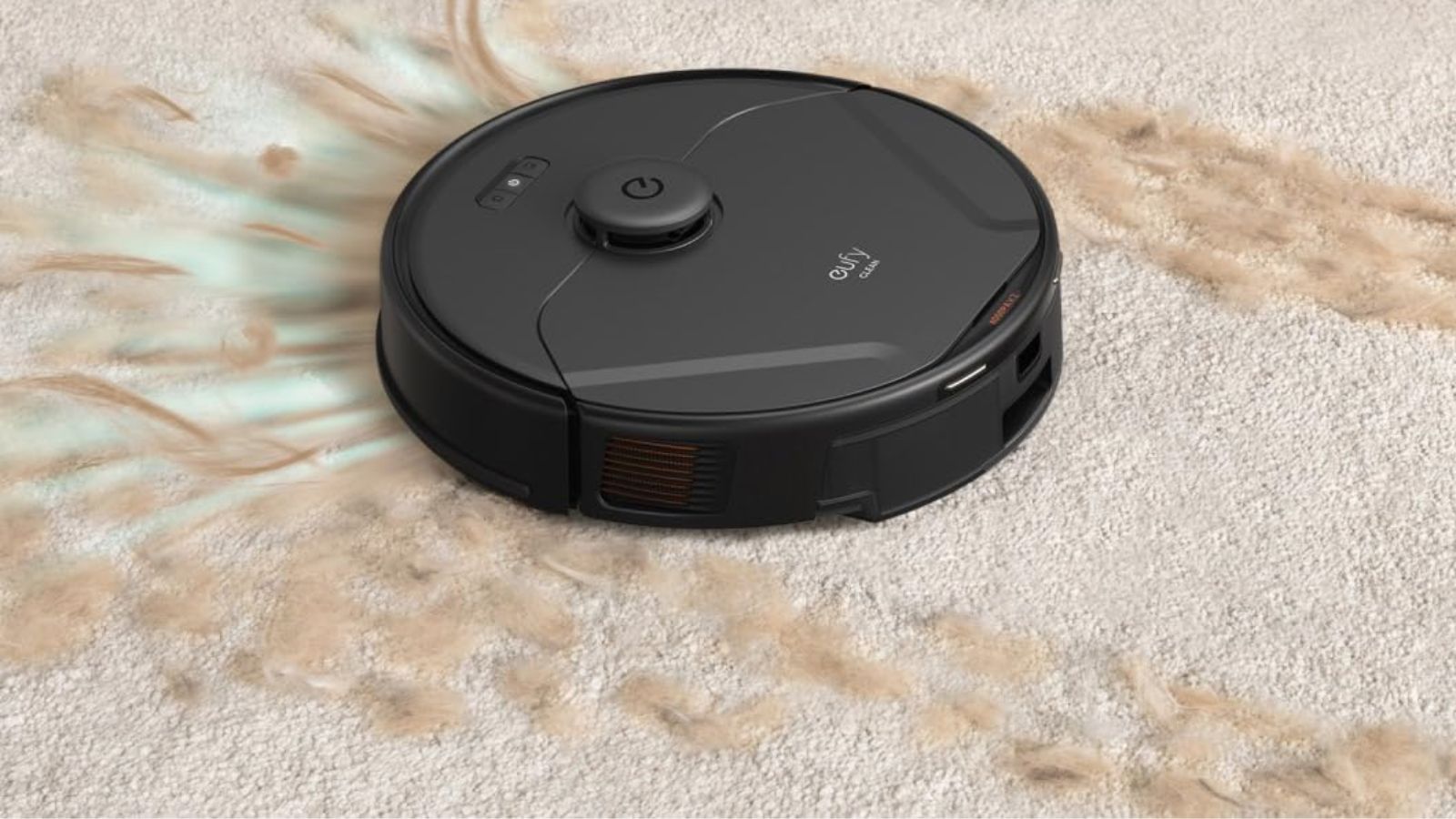 Eufy X8 Pro robot vacuum review – quick, slick, and effective, even years after its debut
Eufy X8 Pro robot vacuum review – quick, slick, and effective, even years after its debutThe Eufy X8 Pro Robot Vacuum claims useful detection, anti-hair wrap, and intelligent features. I tested it for weeks to see whether it's worth the money.
By Laura Honey Published
-
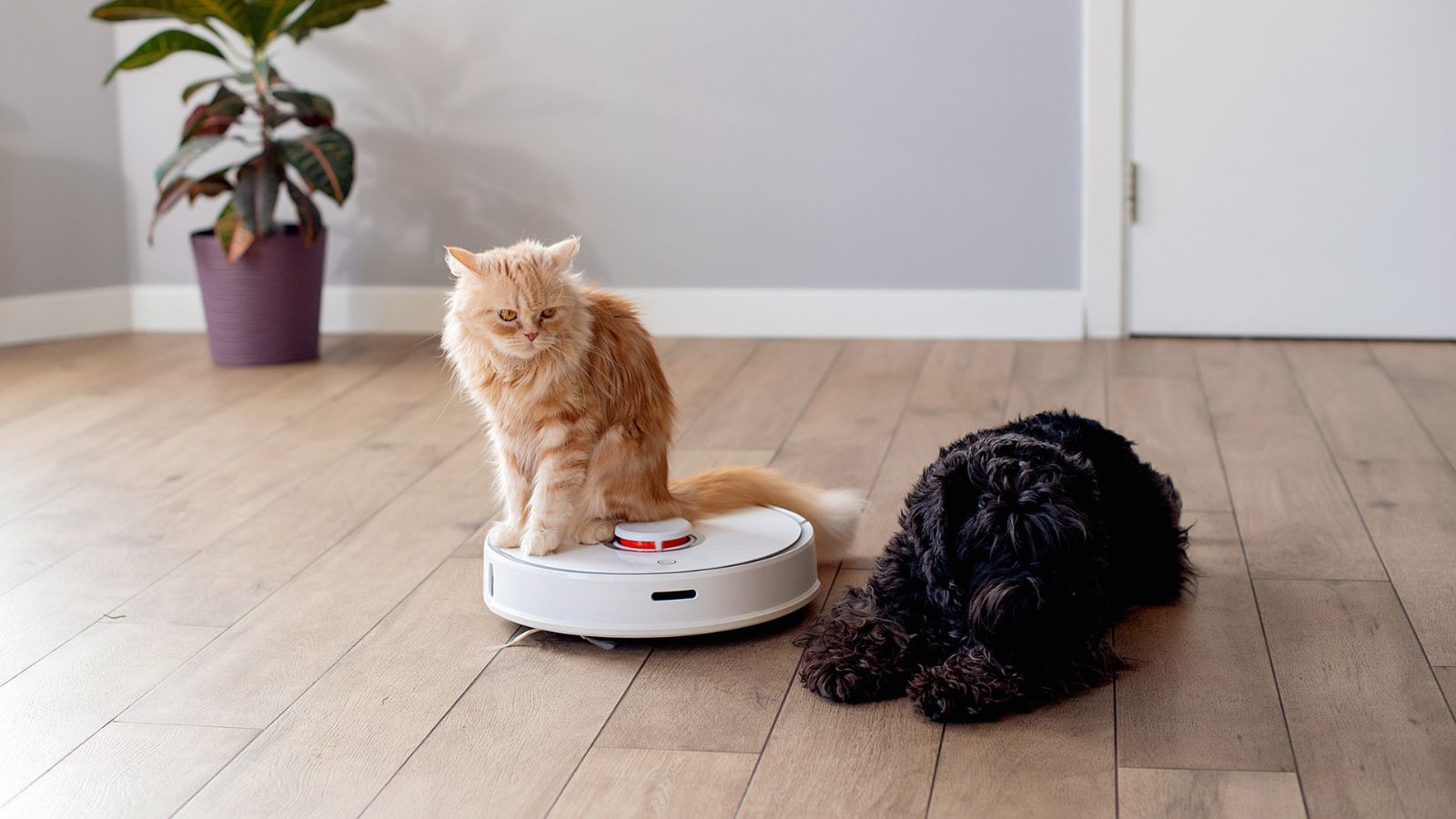 Best robot vacuum for pet hair: tested by experts
Best robot vacuum for pet hair: tested by expertsThe best robot vacuum for pet hair will take the stress out of the fly-aways. Here's our top picks
By Dan Fauzi Last updated
-
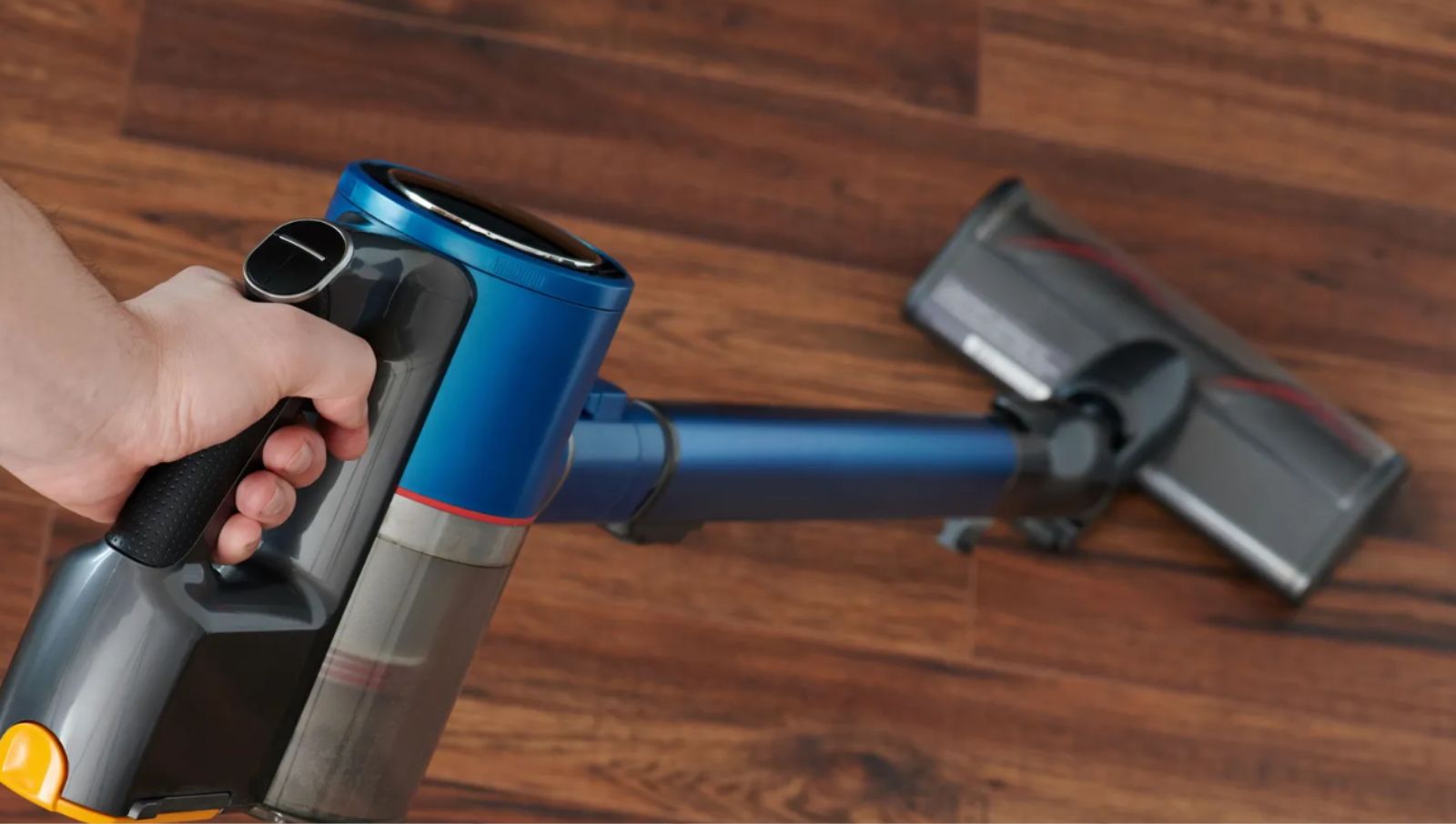 Best vacuums for hardwood floors: After 1000+ hours of testing, these are the top picks for safe brushrolls, smooth mobility, and powerful suction
Best vacuums for hardwood floors: After 1000+ hours of testing, these are the top picks for safe brushrolls, smooth mobility, and powerful suctionFrom our extensive testing, these are the best vacuums to buy if you have hardwood floors, with safe brush rolls, smooth mobility and powerful suction
By Dan Fauzi Last updated
-
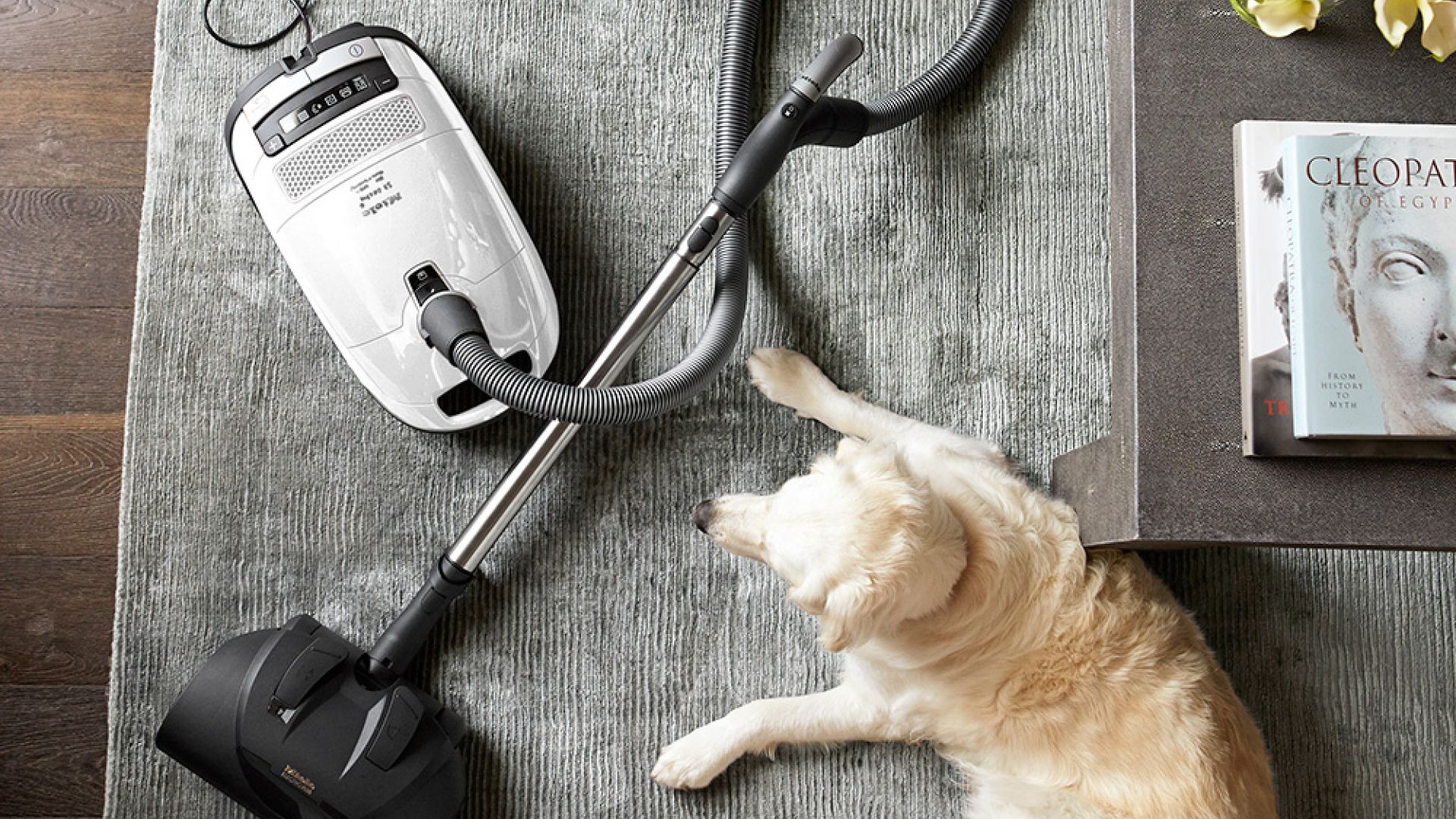 Miele Complete C3 Cat & Dog Canister Vacuum review – it's great, but doesn't deliver the perfect all-round performance you'd expect at this price
Miele Complete C3 Cat & Dog Canister Vacuum review – it's great, but doesn't deliver the perfect all-round performance you'd expect at this priceIt's the most expensive vacuum we've ever tested, but I'm not sure the Miele Complete C3 really lives up to that hefty price tag
By Alex David Last updated
-
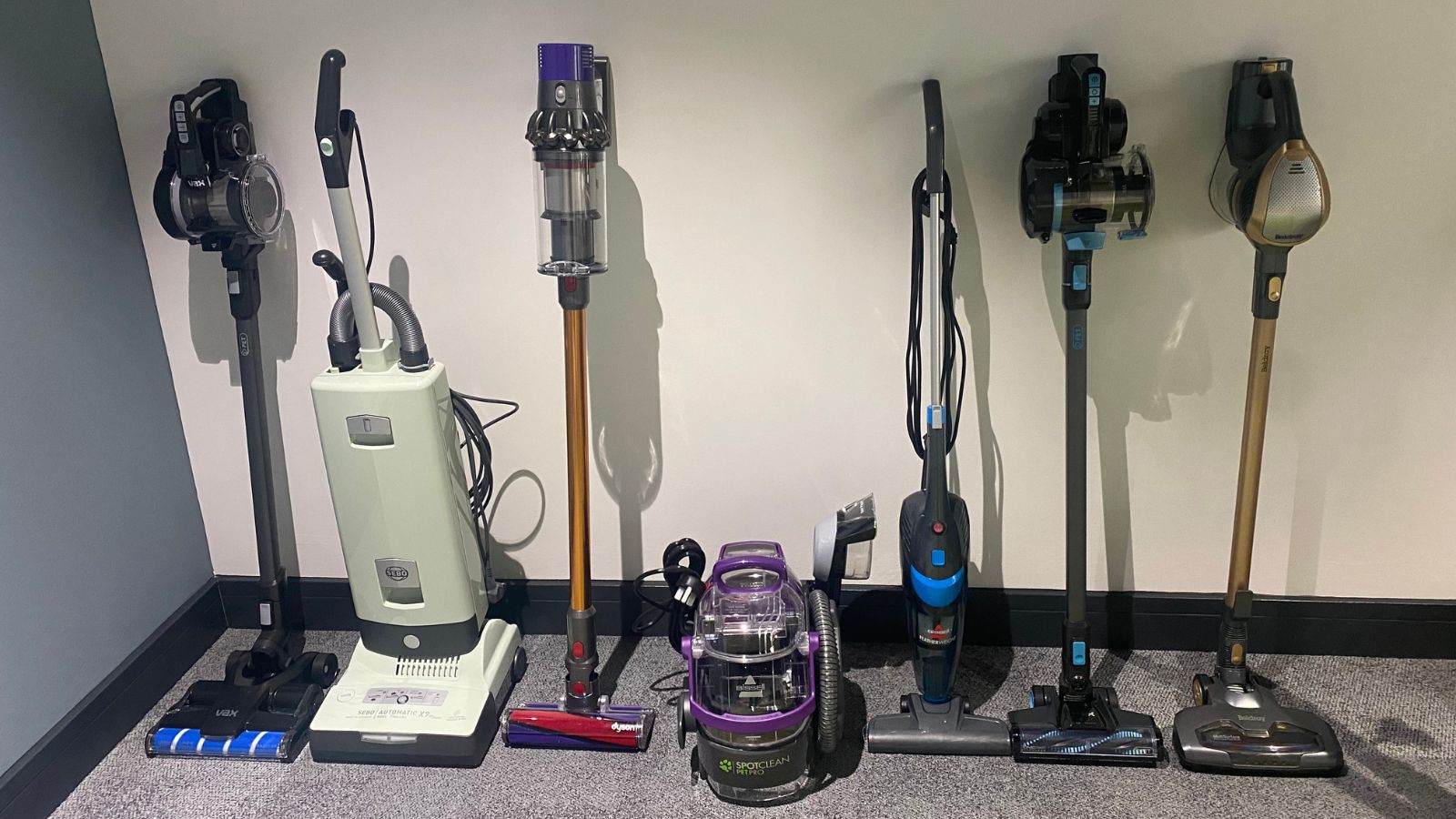 We've thoroughly tested and reviewed 65 of the best vacuums on the market, here's exactly how we do it
We've thoroughly tested and reviewed 65 of the best vacuums on the market, here's exactly how we do itWe've thoroughly researched, tested, and reviewed the best vacuums on the market. Here's how we do it.
By Dan Fauzi Last updated
